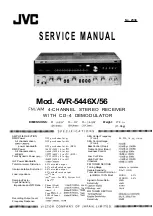
Page 4 / 6
Page / Fitting and user guide for the EEN-REC3
V233-0013-AA receiver
The receiver must not be enclosed in a metal case or placed behind a protective area that
uses metallic wire netting. In the event that you cannot do otherwise, you must connect
the 868 MHz aerial that you will fit outside.
To achieve satisfactory operation, there must be no metal obstacles between the active
aerial and the normal position used for operating the remote controls. It is therefore
preferable to fit the receiver in a high location to avoid obstacles (e.g. metallic wire
netting).
Drill the holes as accurately as possible in the cable pass throughs to prevent any water
seeping into the receiver. Failure to comply with this requirement will void the warranty.
Notes:
•
If the range of the remote controls is too short (no signal detected by the EEN-REC3
receiver): place the aerial in several locations to find the best position (if possible in an
open area away from metal parts in order not to interfere with the reception).
•
The above examples are provided for connection to connector No.1 of the EEN-CEN12-G
central unit (or an EEN-MEDGE GSM unit). The receiver can be connected to any other
of the central unit's connectors (only the terminal numbers of the connector change).
•
Once the receiver is correctly connected to the central unit or the GSM unit, the central
unit's LED must be permanently on (correct communication with the central unit) and the
central unit must indicate on the diagnostics screen that it has detected the receiver by
displaying: '
1=RF
' (example for connector No.1) in the '
Terminals
' section of the
diagnostics screen. If the receiver's LED is not on or '
1=Free
' or '
1= DEFAULT
' appears
on the central unit's screen, check the connections, the voltage between the receiver's +
and - terminals as shown on the diagram and continuity of the wires.
•
Never connect the V.P. (vehicle presence) terminals directly to a power supply. These
terminals detect a change of state (voltage-free contact) from vehicle presence detection
systems.
•
Never connect the relays' C1/T1 or C2/T2 terminals directly to a power supply. These
relays supply a voltage-free contact relay designed to be connected to a pushbutton-type
input to the devices that need controlling. If these devices do not have an input of this
kind, use an intermediate power relay of the correct capacity.
Important:
•
The central unit's pushbutton input connector is only used to trigger the central unit's
CRT relay manually. It cannot trigger the relays on the receiver.
•
To use the anti-passback function: Set an anti-passback value using switches No. 1 to 3
and correctly connect the two entry and exit relays. Remember in particular that the use of
the permanent anti-passback requires that the user must have left via the exit door to be
able to again gain access via the entry door.
•
To use the entry and exit relays without a vehicle detection device:
-
Leave switches 4 and 5 in the OFF position.
-
Or, position switches 4 and 5 to ON and by-pass the V.P. terminals.
























